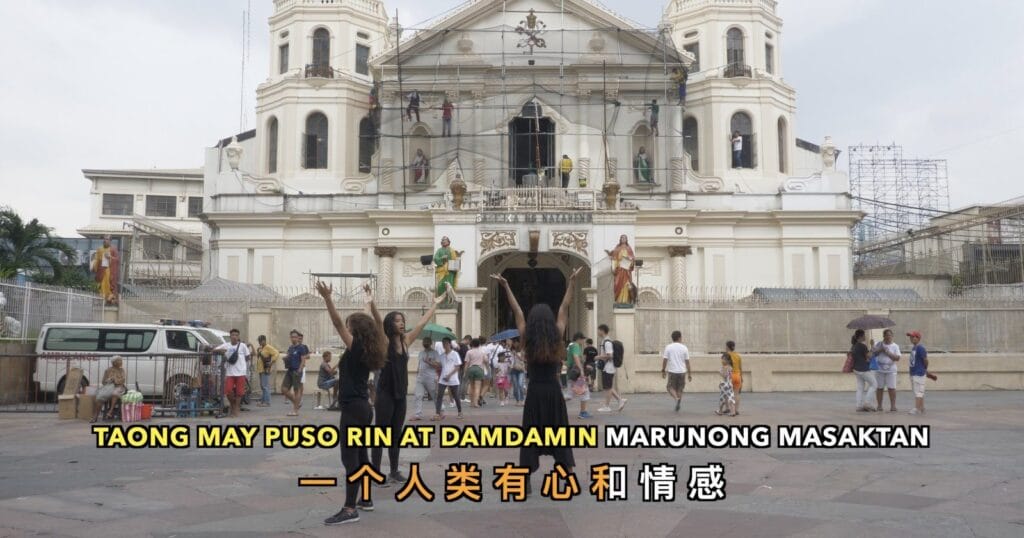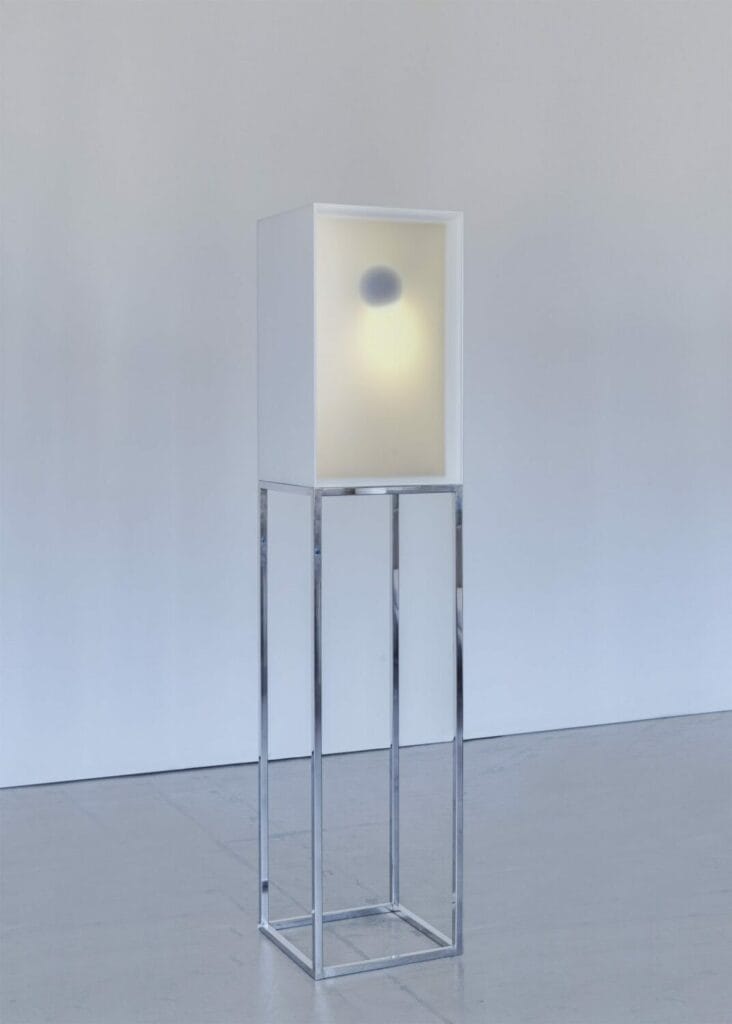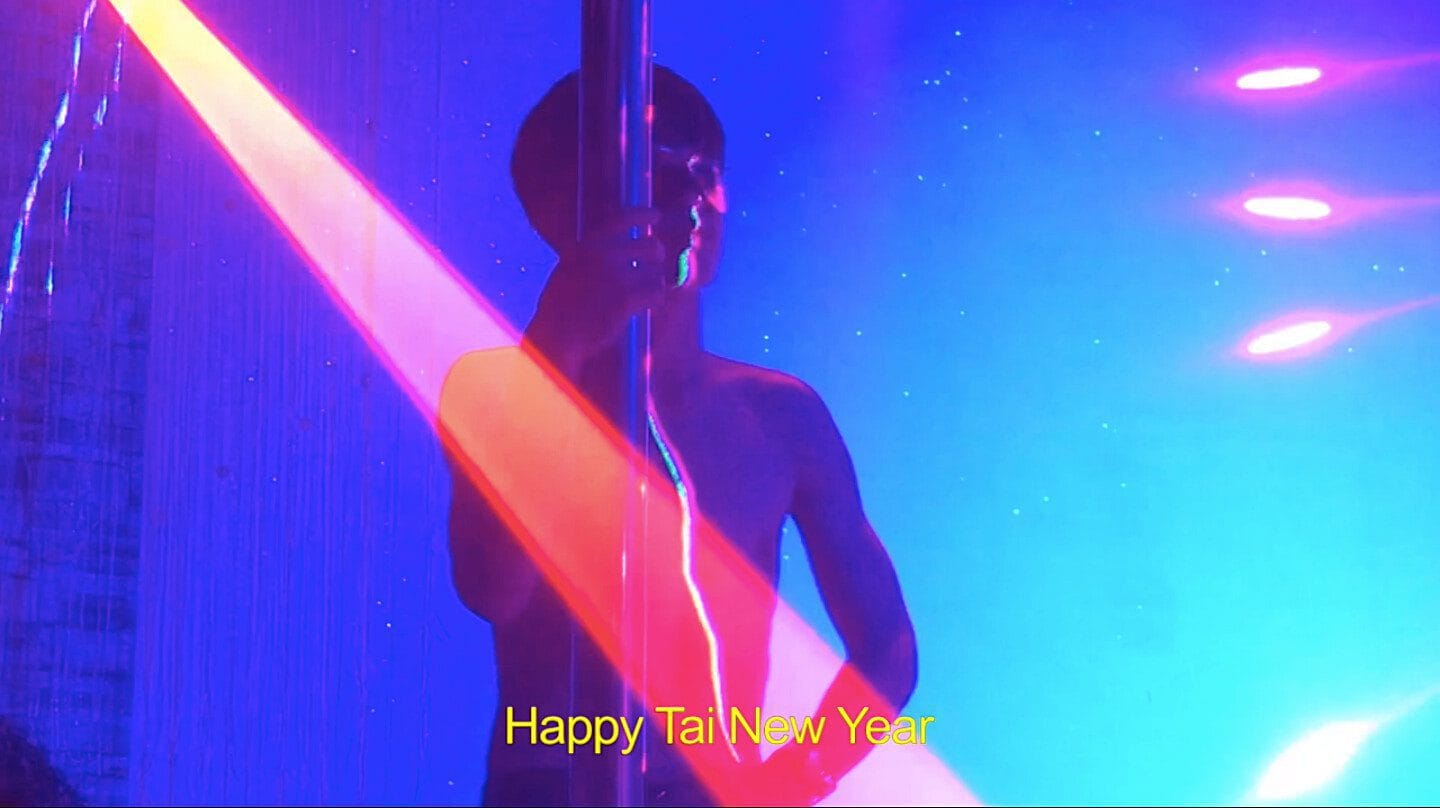SCENE 2 | Eisa Jocson, Samak Kosem. 3 Aug – 14 Aug 2021
Scene 2 of Play and Loop III will feature SuperWoman KTV (2019) and SuperKTVWoman (2019) by Eisa Jocson, and Forever Checkpoints (2019) and Aliens in Adam’s Apple (2020) by Samak Kosem.
In Eisa Jocson’s karaoke style music video SuperWoman KTV (2019), an ensemble of three dancers comprising of Jocson herself and her two co-singers perform choreographed sequences of dance rituals to iterations of Karyn White’s “I’m Not Your Superwoman” including a Filipino pop version, a Pasyon version and a version that utilises the instrumentals of Teresa Teng’s “Moon Represents my Heart”. Through blacking out and muting selected words of the song, Jocson emphasises the imbued nuances and alters the implications of these lyrics. Amid the backdrop of their own city, the trio recontextualise the labour of movement through vigorous dance gestures, conjuring a striking image of female empowerment and resistance. Jocson intentionally foregrounds these myriad female identities, and honours the physical and emotional labour they perform. Against almost unrealistic expectation, these “Superwomen” can be whoever they want to be.
The Filipino Super-KTV-Woman (2019) is the performance documentation of the trio dancing in synchronisation and singing live to “I’m Not Your Superwoman” and other contemporary pop songs by female artists. Influenced by traditionally sung or chanted Filipino oral epics, and pre-colonial folk rituals, the act of karaoke performance becomes a contemporary homage to Filipino song and dance culture. Alternatively, it is also a critique of the exported labour of Filipino singers, hired to cover Western pop songs in restaurants, bars and cruise ships to fulfil capitalistic needs in transnational markets. The Filipino Super-KTV-Woman was performed in the Rockbund Art Museum as part of the 2019 Hugo Boss Asian Art Award, of which Jocson is the winner.

Samak Kosem is a Chiang Mai artist and researcher with a focus in the anthropology of Muslim culture in Southern Thailand. Taking on the genre of a music video, Forever Checkpoint (2019) captures the journey of a Muslim woman driving towards her destination. Her apparent unease is triggered by the numerous border checkpoints along the way, featuring military propaganda and portraits of wanted state criminals. In the predominantly Buddhist Thailand, violent methods of state control in the name of national security are practiced towards the marginalized Islam population of the Deep South. As the woman passes through multiple border checkpoints unquestioned, assuming a new social identity becomes hopeful as socio-geographical borders are dissolved and trespassed one after another. An androgynous and anonymous hand believed to be Jinn, a mythological invisible being living in a parallel world, reaches out from behind and caresses the woman’s face in a moment of queer affect and intimacy. In a time when discriminant body searches, mandatory viral tests and restriction of movement become a lasting norm, Kosem implores viewers to reconsider our bodies as a site to negotiate the expression of freedom and sovereignty.
Forming part of Kosem’s “Chiang Mai Ethnography” research project is Aliens in Adam’s Apple (2020) which explores the different modalities of masculinity within young Shan Burmese migrant men in Chiang Mai. In slow-motion, masqueraded muscular men dance topless in a flashy nightclub as disco lights trace their hypersexualized bodies. In subtitles, one liner messages taken from their Facebook pages address family, friends and loved ones back at home, expressing wistful feelings of tiredness, homesickness and displacement. Kosem opens up an affective space that recognises the complexities that come with desires for betterment in these young Shan men beyond the capitalistic commodification and exoticization of their bodies.
On view in the gallery throughout the eight weeks of Play and Loop III are time-based installations of three artists. Carla Chan’s Space between the light fades (2021) is an animated lightbox showing an ethereal halo ebbing and flowing like a hallucination, or the afterimage of staring into sunlight. Tiffany Sia’s A Wet Finger in the Air (2021) is a randomized infinite loop of bilingual weather reports from 1980-90s Hong Kong TVB station, attempting to capture the prevailing dynamics in a city despite rapidly shifting weather trends. Luke Ching Chin Wai’s Quarantine Hotel (2021) is an installation of objects and slideshow of images from the artist’s recent 21-day quarantine in Hong Kong, where in purgatory idleness the artist turns his chamber into a temporary camera obscura, projecting the off-limit outside world into an interior landscape. Like all of us stuck in the past year, these artists have been daydreaming out of the window into light, incessantly following news reports, and earnestly reveling in a little world despite.

